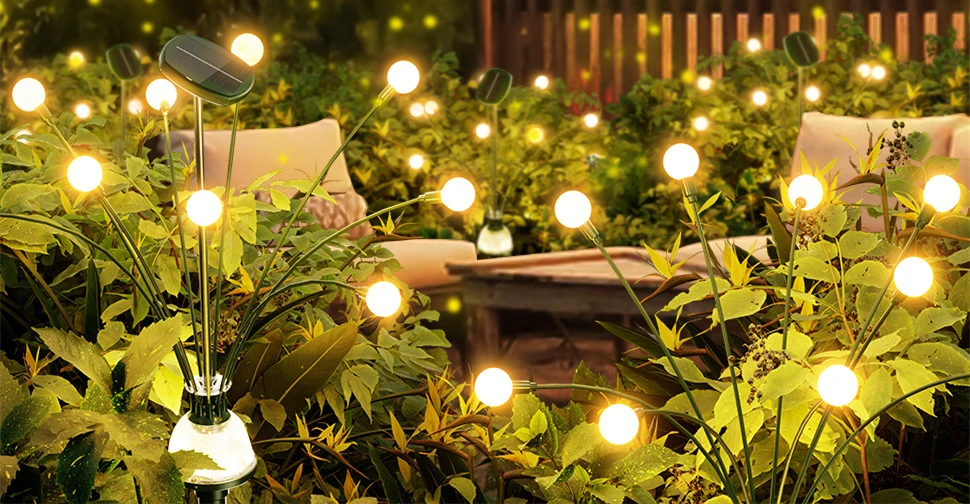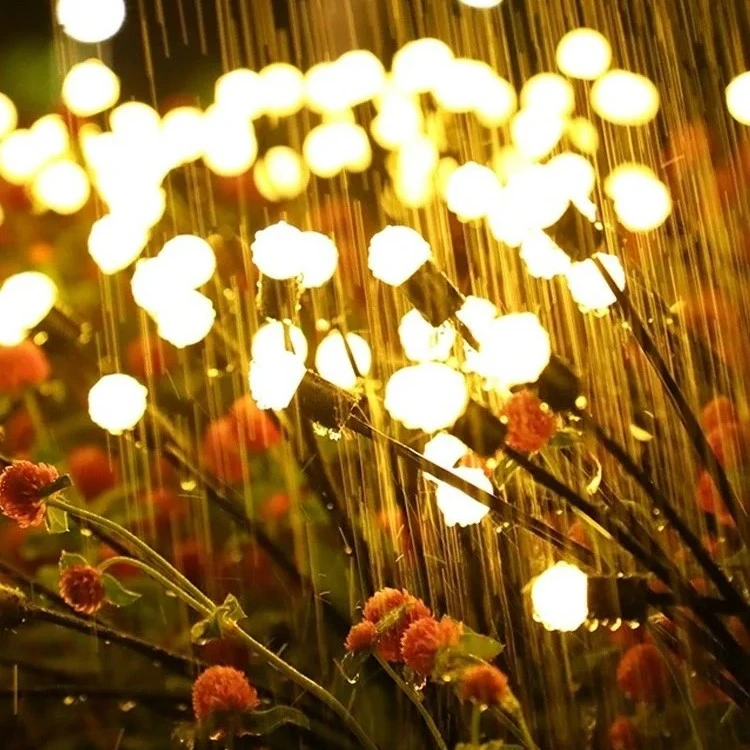Solar lights have become a cornerstone of eco-friendly outdoor lighting, offering homeowners and businesses a sustainable way to illuminate gardens, pathways, and patios without relying on traditional electricity. However, a common question arises: do solar lights work in the shade? This article explores the functionality of solar lights in shaded areas, delving into how they operate, the factors affecting their performance, and practical tips to optimize their use in less-than-ideal lighting conditions. By understanding the interplay of sunlight, shade, and solar technology, you can make informed decisions to enhance your outdoor spaces.

How Solar Lights Function
To understand whether solar lights work in shade, it’s essential to grasp their basic mechanics. Solar lights are compact, self-contained systems that harness sunlight to generate electricity. At their core, they consist of photovoltaic (PV) panels, a rechargeable battery, an LED light, and a photosensor. During daylight hours, the PV panels convert sunlight into electrical energy, which is stored in the battery. At dusk, the photosensor detects low light levels, triggering the battery to power the LED, providing illumination through the night.
The efficiency of this process hinges on the intensity and duration of sunlight exposure. Direct sunlight delivers the highest energy yield, but solar lights in low light conditions, such as cloudy days or shaded areas, can still function, albeit with reduced efficiency. The key lies in the quality of the components and the degree of shade, which we’ll explore further.
Can Solar Lights Charge in the Shade?
Yes, solar lights can charge in the shade, but their performance depends on the type and extent of shading. Shade is a broad term, ranging from light dappled shadows under a tree to heavy shade cast by a building or dense foliage. According to industry insights, solar panels in partial shade can still absorb indirect sunlight, generating electricity at a reduced rate compared to direct sunlight exposure. For instance, a high-quality solar light placed in partial shade may produce 20-30% of its optimal output, requiring longer charging times to achieve a full battery charge.
In heavily shaded areas, such as under dense canopies or north-facing walls, the charging efficiency drops significantly. If the solar panel receives no sunlight, the battery will not charge, and the light will fail to illuminate. However, modern advancements, like those seen in products from Shade Solar, incorporate adaptive features that adjust light output based on the amount of solar energy collected, ensuring functionality even in shaded outdoor lighting scenarios.
Factors Affecting Solar Light Performance in Shade
Several variables influence how well solar lights perform in shade:
1. Quality of the Solar Panel
High-quality PV panels, such as those using monocrystalline silicon, are more efficient at capturing sunlight, even in low-light conditions. These panels can generate more electricity per unit of light compared to cheaper amorphous panels, making them better suited for solar lights in shaded gardens.
2. Battery Capacity
The battery’s ability to store energy is critical. Rechargeable batteries like lithium-ion or nickel-metal hydride (NiMH) with higher capacities can store more energy, allowing lights to operate longer even if they receive limited charge during the day. Regular maintenance, such as replacing old batteries, ensures consistent performance.
3. Degree of Shade
The intensity of shade matters. Light shade, such as that caused by a tree with sparse leaves, allows some sunlight to filter through, enabling partial charging. In contrast, deep shade from structures or dense foliage severely limits light access, reducing charging efficiency.
4. Duration of Sunlight Exposure
Even in shaded areas, the amount of time the solar panel is exposed to any form of light affects its charge. For example, a light receiving four hours of indirect sunlight can provide 6-8 hours of illumination, though it may not be as bright as one charged in direct sunlight for eight hours.
5. Seasonal and Weather Conditions
Solar lights in winter face additional challenges due to shorter days and lower sun angles. Cloudy weather or snow accumulation on panels further reduces charging efficiency. Regular cleaning of solar panels to remove debris, snow, or dirt is crucial to maintain performance.
Innovative Solutions for Shaded Areas
Recent advancements in solar lighting technology have made it easier to use these lights in shaded environments. Here are some innovative approaches to enhance solar light efficiency in shade:
Semi-Separate and Remote Solar Panels
Some solar lights for shaded areas feature detachable solar panels connected by cables, allowing the panel to be placed in a sunny spot up to 15 feet away from the light itself. This design, seen in products like the Biolite SolarHome 620, ensures the panel captures maximum sunlight while the light illuminates a shaded area, such as under a pergola or shade sail.
Dual-Mode Solar Lights
Dual-mode solar lights offer flexibility by allowing charging via USB or other power sources when sunlight is insufficient. This is particularly useful for solar lights in cloudy weather or during winter months when daylight is limited.
Adaptive Technology
Brands like Shade Solar incorporate microcomputers that monitor incoming solar energy and adjust light output to maintain consistent illumination. These adaptive solar lights are designed to work in shade categories (Shade-1 to Shade-3), where Shade-1 represents light shadows with a clear sky view, and Shade-3 indicates dense forest-like conditions.
Reflective Surfaces
Positioning solar lights near reflective surfaces, such as white walls or mirrors, can redirect ambient light onto the solar panel, boosting charging efficiency. This technique is particularly effective in partially shaded areas.
Practical Tips to Optimize Solar Lights in Shade
To maximize the performance of solar lights in shaded areas, consider the following strategies:
- Choose High-Quality Lights: Invest in solar lights with efficient PV panels and high-capacity rechargeable batteries. Brands like True Lumens and Shade Solar are known for their reliability in low-light conditions.
- Strategic Placement: Place solar panels in areas that receive at least some indirect sunlight, such as under sparse trees or near reflective surfaces. Avoid deep shade where no light penetrates.
- Regular Maintenance: Clean solar panels regularly to remove dust, snow, or debris that can block sunlight. Check and replace rechargeable batteries every few years to maintain performance.
- Use Supplemental Charging: For solar lights in heavily shaded areas, consider models with USB charging capabilities or use LED flashlights to provide artificial light to the solar panel for short periods.
- Adjust Expectations: Understand that solar lights in shade may not stay lit as long or shine as brightly as those in direct sunlight. Opt for lights with power-saving modes to extend runtime.
Real-World Applications and Success Stories
Homeowners and businesses have successfully used solar lights in shaded gardens and other low-light areas. For example, a homeowner with a tree-lined garden reported significant improvements after relocating their solar lights to spots with partial shade and using reflective surfaces to enhance light capture. Another case involved a commercial property using remote solar panel lights to illuminate a shaded patio, achieving consistent nighttime lighting without electrical wiring.
Products like the AloftSun Motion Sensor Solar Landscape Spotlights have been praised for their ability to function in partially shaded areas, providing bright illumination for pathways and security features. Similarly, solar fairy lights with long cables between the panel and the first bulb offer flexibility, allowing users to place the panel in a sunny spot while decorating shaded trellises or hedges.

Environmental and Economic Benefits
Using solar lights in shaded areas not only enhances outdoor aesthetics but also aligns with sustainability goals. These lights reduce reliance on fossil fuel-based electricity, lowering carbon footprints and energy bills. Their ease of installation—no wiring or trenching required—makes them a cost-effective solution for outdoor solar lighting. By choosing high-quality, durable products, users can enjoy long-lasting performance, further amplifying the environmental and economic benefits.
Conclusion
So, do solar lights work in the shade? The answer is a qualified yes. While solar lights in shaded areas may not perform as efficiently as those in direct sunlight, advancements in solar lighting technology, such as high-efficiency PV panels, dual-mode solar lights, and adaptive features, make them viable for a range of shaded environments. By selecting quality products, optimizing placement, and maintaining components, you can achieve reliable, eco-friendly lighting even in partially shaded areas. Whether illuminating a garden path, a shaded patio, or a tree-lined walkway, solar lights offer a sustainable solution to brighten your outdoor spaces year-round.
For those looking to explore solar lights for shaded gardens, consider brands like True Lumens or Shade Solar, and prioritize models with flexible solar panel placement or supplemental charging options. With the right approach, you can harness the power of the sun, even in the shade.


Leave a Reply